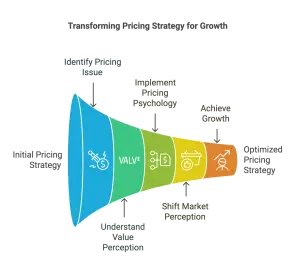The concept of time management has become increasingly important in today’s fast-paced world, where time seems to be a limited resource. In order to achieve success and accomplish our goals, it is crucial to effectively manage our time and tasks. One popular time management technique is the Time Management Matrix, also known as the Four Quadrants of Time Management.
Table of contents
- Overview
- The Four Quadrants of Time Management: Understanding and Applying the Time Management Matrix
- Quadrant 1: Urgent and Important Tasks
- Quadrant 2: Not Urgent but Important Tasks
- Quadrant 3: Urgent but Not Important Tasks
- Quadrant 4: Not Urgent and Not Important Tasks
- Frequently Asked Questions
- What is the Time Management Matrix and how can it help me?
- How does the Time Management Matrix differentiate between urgent and important tasks?
- Why is it important to balance all four quadrants of the Time Management Matrix?
- Can the Time Management Matrix be used for team time management?
- How can the Time Management Matrix help me avoid unpleasant incidences and unforeseen events?
- Is the Time Management Matrix a complex concept to understand?
Overview
Developed by Stephen R. Covey, author of the bestselling book “The 7 Habits of Highly Effective People,” the Time Management Matrix is a powerful tool for personal and professional productivity. It categorizes tasks and activities into four quadrants based on their level of urgency and importance, helping individuals prioritize and manage their time effectively.
The first quadrant, also known as Quadrant 1, consists of tasks that are both urgent and important. These tasks often have tight deadlines and need immediate attention. Examples of Quadrant 1 tasks include handling crises, meeting deadlines, and dealing with urgent phone calls or emails. Poor planning and procrastination often lead to tasks falling into this quadrant.
Quadrant 2 consists of tasks that are important but not urgent. These tasks are crucial for long-term success and growth, but they do not have an immediate deadline. Examples of Quadrant 2 tasks include long-term planning, relationships, and personal development. It is often referred to as the “Quadrant of Quality and Personal Leadership.”
Quadrant 3 includes tasks that are urgent but not important. These tasks, also known as distractions, may seem important at the moment but do not contribute to long-term goals. Examples of Quadrant 3 tasks include some phone calls, emails, and meetings. Spending too much time in this quadrant can result in neglecting important tasks.
The last quadrant, Quadrant 4, includes tasks that are neither urgent nor important. These tasks are often time-wasters and should be avoided. Examples of Quadrant 4 tasks include excessive social media use, mindless scrolling, and low-priority tasks.
The Four Quadrants of Time Management: Understanding and Applying the Time Management Matrix
Understanding and applying the time management matrix involves following a step-by-step process to effectively manage your time and prioritize tasks. Here are the steps to apply the four quadrants of time management:
- Understand the four quadrants: Learn about the four quadrants of time management and their significance in categorizing tasks based on urgency and importance.
- Identify tasks: Make a list of all your tasks and categorize them into the four quadrants based on their urgency and importance.
- Focus on Quadrant 2: Prioritize tasks in Quadrant 2, which includes important but not urgent tasks, as these contribute to long-term goals and personal growth.
- Delegate or eliminate: Delegate tasks in Quadrant 3, which are urgent but not important, and eliminate or minimize tasks in Quadrant 4, which are neither urgent nor important.
- Create a schedule: Allocate time slots for tasks in Quadrant 1, which are urgent and important, and Quadrant 2, ensuring you have dedicated time for high-priority activities.
- Regularly review and adjust: Continuously reassess your tasks, update priorities, and make necessary adjustments to your schedule to stay on track.
What is Time Management and Why is it Important?
Time management is the process of organizing and prioritizing tasks to optimize the use of time. It holds great significance as it enables individuals to increase productivity, reduce stress, and achieve their goals.
By effectively managing time, people can allocate their time to tasks that hold the most importance and impact, ensuring that deadlines are met and tasks are completed on schedule. It also aids in staying organized, maintaining focus, and making informed decisions about how to utilize time. With proper time management, individuals can strike a balance between work, personal life, and leisure activities, leading to a more fulfilling and successful life.
What are the Four Quadrants of Time Management?
The four quadrants of time management are a categorization of tasks based on their level of urgency and importance.
- Quadrant 1: Urgent and Important Tasks – This includes tasks with tight deadlines, crises, and emergencies. It is crucial to prioritize and manage these tasks promptly to prevent any negative consequences.
- Quadrant 2: Not Urgent but Important Tasks – This quadrant consists of tasks such as planning, building relationships, and personal development. It is important to schedule time for these tasks to prevent them from becoming urgent.
- Quadrant 3: Urgent but Not Important Tasks – This quadrant includes tasks like interruptions, unnecessary meetings, and some emails. It is recommended to delegate or minimize these tasks in order to focus on what truly matters.
- Quadrant 4: Not Urgent and Not Important Tasks – This quadrant involves tasks that are not urgent and do not hold much importance, such as excessive social media use and time-wasting activities. It is best to avoid these tasks in order to maximize productivity.
Understanding and effectively managing tasks in each quadrant can greatly enhance one’s time management skills.
Find out who’s responsible for making us feel bad about our time management skills.
Who Developed the Time Management Matrix?
The Time Management Matrix, (aka the Eisenhower Time Management Matrix) with its four quadrants, was developed by Dwight D. Eisenhower and popularized by Stephen R. Covey. Covey, an author, educator, and businessman, introduced the matrix in his book, “The 7 Habits of Highly Effective People.” He emphasized the significance of prioritizing tasks based on their urgency and importance.
Quadrant 1 represents urgent and important tasks, while Quadrant 2 focuses on important but not urgent tasks. Quadrant 3 consists of urgent but not important tasks, and Quadrant 4 includes tasks that are neither urgent nor important. Covey’s matrix provides a framework for efficient time management and helps individuals allocate their time effectively.
Time management tip: Stay out of Quadrant 1 or risk being a slave to urgent and important tasks.
Quadrant 1: Urgent and Important Tasks
When it comes to managing time, Quadrant 1 is made up of tasks that are both urgent and important. These tasks require immediate attention because they are time-sensitive and have a direct impact on achieving goals. Examples include deadlines, crises, and important meetings.
Prioritizing tasks in Quadrant 1 is crucial for maintaining productivity and avoiding last-minute rushes. To effectively handle Quadrant 1 tasks, it is important to plan ahead, establish clear priorities, eliminate distractions, and allocate enough time and resources. By diligently addressing urgent and important tasks in Quadrant 1, individuals can increase efficiency and decrease stress levels.
What are Examples of Quadrant 1 Tasks?
Quadrant 1 tasks are characterized by their urgency and importance, requiring immediate attention. Examples of quadrant 1 tasks include:
- Meeting critical deadlines.
- Responding to urgent client requests.
- Resolving unexpected crises or emergencies.
- Dealing with health or safety issues.
- Handling time-sensitive financial matters.
Properly managing quadrant 1 tasks is crucial to prevent them from becoming overwhelming and leading to stress or burnout. Prioritizing these tasks, setting realistic deadlines, and delegating when necessary can help ensure they are handled efficiently. By effectively managing quadrant 1 tasks, individuals can maintain productivity, meet obligations, and achieve desired outcomes.
Don’t let Quadrant 1 tasks control you – take control of them with these tips.
How to Prioritize and Manage Quadrant 1 Tasks?
To effectively prioritize and manage Quadrant 1 tasks, follow these steps:
- Identify tasks that are both urgent and important and require immediate attention.
- Create a to-do list for Quadrant 1 tasks, ensuring clear deadlines are set for each task.
- Break down complex tasks into smaller, manageable steps for easier completion.
- Eliminate distractions and focus on completing one task at a time to increase productivity.
- Delegate tasks that can be handled by others, freeing up your time for more important tasks.
- Utilize time management tools such as calendars and reminders to stay organized and on track.
Fact: Properly managing Quadrant 1 tasks can reduce stress and increase productivity, leading to better overall time management.
What are the Benefits of Properly Managing Quadrant 1 Tasks?
Properly managing Quadrant 1 tasks brings several benefits.
- Prioritization: By identifying urgent and important tasks, you are able to focus on what requires immediate attention.
- Efficiency: Handling Quadrant 1 tasks promptly prevents them from turning into emergencies, resulting in reduced stress.
- Productivity: Completing important tasks on time allows you to stay on track and successfully achieve your goals.
- Reliability: Meeting deadlines and delivering results builds trust and enhances your professional reputation.
Just remember, those important but not urgent tasks in Quadrant 2 won’t magically disappear, so don’t procrastinate…unless you want to live in Quadrant 4 forever.
Quadrant 2: Not Urgent but Important Tasks
In the concept of time management, Quadrant 2 refers to tasks that are important but not urgent. These tasks are often neglected, but they play a crucial role in achieving long-term goals and personal effectiveness. By prioritizing Quadrant 2 tasks, individuals can improve their planning, increase productivity, and reduce stress levels.
Examples of Quadrant 2 tasks include:
- Exercising
- Building relationships
- Long-term planning
- Personal development
By dedicating time and effort to these tasks, individuals can adopt a proactive approach towards their daily lives and attain a healthier work-life balance.
What are Examples of Quadrant 2 Tasks?
Quadrant 2 tasks are those that are important but not urgent, allowing for proactive planning and personal growth. Some examples of quadrant 2 tasks include:
- Setting long-term goals
- Developing skills
- Building relationships
- Strategic planning
Prioritizing quadrant 2 tasks can help individuals prevent crises, increase productivity, and achieve a better work-life balance. This also includes allocating time for activities like exercise, self-care, and reflection, which all fall under quadrant 2. By investing in quadrant 2 tasks, individuals can avoid the stress and reactivity associated with quadrant 1 tasks, ultimately leading to greater effectiveness and fulfillment.
When it comes to quadrant 2 tasks, prioritize like a pro and manage like a boss.
How to Prioritize and Manage Quadrant 2 Tasks?
To effectively prioritize and manage Quadrant 2 tasks, follow these steps:
- Identify Quadrant 2 tasks: These tasks are important but not urgent, such as long-term planning, goal setting, and personal development.
- Set goals and objectives: Determine what you want to achieve and break it down into actionable tasks.
- Create a schedule: Allocate specific time slots for Quadrant 2 tasks to ensure they are given priority.
- Eliminate distractions: Minimize interruptions and focus on the task at hand to maximize productivity.
- Practice time blocking: Dedicate uninterrupted blocks of time for Quadrant 2 tasks, ensuring they are not overshadowed by urgent tasks.
- Delegate or automate: Identify tasks that can be delegated or automated to free up more time for Quadrant 2 activities.
- Review and adjust: Regularly assess your progress and make necessary adjustments to ensure Quadrant 2 tasks remain a priority.
By effectively prioritizing and managing Quadrant 2 tasks, you can invest in activities that contribute to long-term success and personal growth.
What are the Benefits of Properly Managing Quadrant 2 Tasks?
What are the Benefits of Properly Managing Quadrant 2 Tasks?
- Increased productivity: By allocating time for important tasks, individuals can effectively accomplish long-term goals and projects.
- Improved decision-making: With less urgency, individuals have the opportunity to make thoughtful and strategic choices, resulting in better outcomes.
- Reduced stress: Staying proactive and organized in managing Quadrant 2 tasks can prevent them from becoming urgent, reducing stress levels.
- Enhanced work-life balance: Prioritizing Quadrant 2 tasks ensures individuals have time for personal growth, relationships, and self-care.
- Greater focus on goals: Managing Quadrant 2 tasks helps individuals align their activities with their long-term objectives, promoting progress and success.
Quadrant 3: Urgent but Not Important Tasks
Quadrant 3 of time management is focused on tasks that are urgent but not important. These tasks require immediate attention, but do not have a significant impact on your long-term goals. Examples of such tasks include dealing with interruptions, unimportant emails, or unnecessary meetings. While it may be tempting to prioritize these tasks, it is crucial to prioritize Quadrant 2 activities that are important and align with your goals.
Pro-tip: Whenever possible, delegate or eliminate Quadrant 3 tasks to make time for activities that truly matter.
What are Examples of Quadrant 3 Tasks?
Quadrant 3 tasks are tasks that are urgent but not important in terms of achieving our goals or fulfilling our priorities. Some examples of quadrant 3 tasks include attending to unimportant phone calls, responding to unnecessary emails, or dealing with interruptions that do not contribute to our long-term objectives. These tasks often stem from the priorities and distractions of others. While they may seem urgent, they do not align with our own goals and can divert our attention from important tasks in quadrant 2. It is crucial to identify and minimize quadrant 3 tasks in order to effectively prioritize our time.
How to Prioritize and Manage Quadrant 3 Tasks?
To effectively prioritize and manage Quadrant 3 tasks, follow these steps:
- Identify the urgency of the task: Determine if the task truly requires immediate attention or if it can be delayed.
- Evaluate the importance of the task: Assess if the task aligns with your long-term goals and contributes to your overall success.
- Delegate or eliminate tasks: Delegate tasks that can be handled by someone else, freeing up your time for more important responsibilities. Eliminate tasks that do not provide significant value or contribute to your goals.
- Set boundaries and manage interruptions: Minimize distractions and interruptions from tasks that are not urgent or important. Prioritize your focus on tasks in Quadrant 3.
- Use time-blocking techniques: Allocate specific time slots in your schedule for Quadrant 3 tasks to ensure they receive proper attention without encroaching on more important tasks.
Spending too much time in Quadrant 3 can turn your life into a constant game of Whack-a-Mole, with urgent but ultimately unimportant tasks popping up everywhere.
What are the Consequences of Spending Too Much Time in Quadrant 3?
Spending an excessive amount of time in Quadrant 3 can have negative consequences on productivity and overall effectiveness. These tasks are urgent but not important, often coming from external demands and distractions. As a result, individuals may lose focus on important priorities, leading to a decrease in the quality of work and an increase in stress levels.
Constantly reacting to urgent but non-essential tasks can also divert valuable time and energy from Quadrant 2, where important but non-urgent tasks reside. To avoid these consequences, it is crucial to assess the true importance of tasks and delegate or eliminate those that do not align with long-term goals.
Quadrant 4: Not Urgent and Not Important Tasks
Quadrant 4 is comprised of tasks that fall under neither the urgent nor important category. These tasks are often distractions or time-wasters that provide little value or contribute to long-term goals. It’s crucial to minimize the time spent on Quadrant 4 activities in order to maximize productivity. Examples of Quadrant 4 tasks include:
- Excessive scrolling on social media
- Watching mindless TV shows
- Engaging in unproductive gossip
By recognizing and refraining from such tasks, individuals can prioritize their time and focus on activities that are truly important and align with their goals.
What are Examples of Quadrant 4 Tasks?
Quadrant 4 tasks are unproductive and have little to no value. Some examples of quadrant 4 tasks include aimlessly scrolling through social media, excessive television watching, playing video games without a purpose, and engaging in gossip. These tasks are typically time-wasting activities that provide no real benefit or contribute to personal or professional growth. It is important to minimize time spent on quadrant 4 tasks and instead focus on more important and meaningful activities in quadrants 1, 2, and 3. Prioritizing tasks in the other quadrants can help improve productivity and effectively achieve goals.
Just remember, Quadrant 4 is where productivity goes to die – avoid it like the plague.
How to Avoid Spending Time in Quadrant 4?
To avoid spending time in Quadrant 4, where tasks are neither urgent nor important, follow these steps:
- Identify Quadrant 4 tasks: These are activities that provide little to no value and can be eliminated or delegated.
- Set clear priorities: Focus on Quadrant 1 and Quadrant 2 tasks to ensure you are working on what matters most.
- Create a schedule: Plan your day and allocate time for important tasks, minimizing distractions and interruptions.
- Practice time management techniques: Use techniques like the Pomodoro Technique or time blocking to stay focused and productive.
- Prioritize self-care: Take breaks, exercise, and manage stress to maintain energy and avoid burnout.
- Delegate tasks: If possible, delegate tasks in Quadrant 4 to others who may have more time or skills for them.
- Eliminate time-wasting activities: Review your habits and eliminate activities that contribute little to your goals or well-being.
What are the Consequences of Spending Too Much Time in Quadrant
Spending excessive amounts of time in Quadrant 3, which consists of tasks that are urgent but not important, can have detrimental consequences. It can cause individuals to lose focus on tasks that truly hold significance and impede progress towards long-term goals. This quadrant is often filled with distractions, interruptions, and demands from others that may not align with one’s priorities.
By prioritizing tasks in Quadrant 2, which are important but not urgent, individuals can effectively manage their time and energy towards activities that contribute to personal growth, development, and overall productivity. Therefore, reducing the amount of time spent in Quadrant 3 can lead to more meaningful and impactful outcomes.
Frequently Asked Questions
What is the Time Management Matrix and how can it help me?
The Time Management Matrix is a tool used to prioritize tasks based on their urgency and importance. It can help you increase productivity and achieve your goals by balancing your time and improving your decision-making.
How does the Time Management Matrix differentiate between urgent and important tasks?
The matrix has four quadrants, with Quadrant 1 being for tasks that are both urgent and important. This helps you identify tasks that need immediate attention and those that can be prioritized for long-term success in Quadrant 2.
Why is it important to balance all four quadrants of the Time Management Matrix?
Spending too much time in Quadrant 1 can lead to stress and lack of growth. It is essential to achieve a balance between all four quadrants to achieve overall goals and improve both personal and professional life.
Can the Time Management Matrix be used for team time management?
Yes, the matrix can be used for team time management and finding the most accurate time tracking tool. It can help teams prioritize tasks and improve overall productivity levels.
How can the Time Management Matrix help me avoid unpleasant incidences and unforeseen events?
By prioritizing tasks in Quadrant 1, you can handle urgent matters effectively and have more time to plan and prepare for unforeseen events. This can help prevent unpleasant incidences and improve your overall productivity.
Is the Time Management Matrix a complex concept to understand?
No, the matrix is a simple and effective tool that can be used by anyone. Its two main parts, urgency and importance, are easy to understand and can help you work efficiently and achieve anything.





